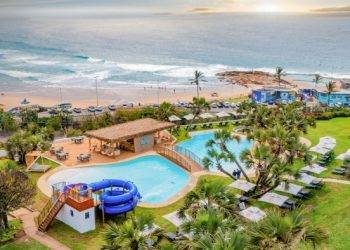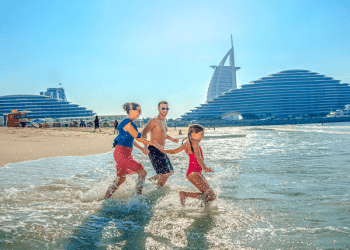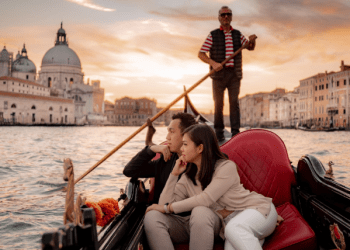Nepal, with its stunning Himalayan landscapes and rich cultural heritage, is a dream destination for trekkers. When planning your trekking adventure, one key decision you’ll need to make is whether to trek with a guide or go solo. Each option has its unique set of advantages and challenges. This blog will explore the pros and cons of both guided and solo trekking in Nepal, helping you determine which choice best suits your adventure style and ensures a safe and memorable experience.
Trekking with a Guide
Advantages:
- Safety and Security:
Trekking with a guide significantly enhances your safety. Guides are trained to handle emergencies, recognise signs of altitude sickness, and navigate challenging terrains. Their expertise can be invaluable in unpredictable mountain environments.
- Local Knowledge and Cultural Insights:
Guides offer deep insights into the local culture, traditions, and history. They can provide fascinating information about the places you visit, translating interactions with locals and enhancing your overall cultural experience.
- Logistics and Permits:
A guide handles all the logistics, including securing permits, arranging accommodations, and planning the daily itinerary. This allows you to focus solely on enjoying the trek without worrying about the administrative details.
- Route Navigation:
Navigating Nepal’s remote trails can be challenging. A guide ensures you stay on the right path, avoiding the risk of getting lost. This is especially beneficial on less-marked trails.
Disadvantages:
- Cost:
Hiring a guide adds to the cost of your trek. While many find the benefits worth the expense, budget-conscious trekkers might see this as a drawback.
- Less Flexibility:
With a guide, your schedule and pace may be more fixed. Spontaneity and the freedom to change plans on a whim can be limited.
Solo Trekking
Advantages:
- Independence and Flexibility:
Solo trekking offers complete independence. You set your own pace, choose your own routes, and make decisions on the fly, which can make the adventure more personal and fulfilling.
- Cost-Effective:
Without the cost of hiring a guide, solo trekking can be more budget-friendly. You only need to cover your own expenses, making it a more economical option for many trekkers.
- Personal Challenge:
Trekking alone is a significant personal challenge that can be immensely rewarding. It tests your navigation skills, resilience, and ability to handle solitude, providing a deep sense of accomplishment.
Disadvantages:
- Safety Concerns:
Solo trekking can be riskier. Without a guide, you’re more vulnerable in emergencies, whether it’s getting lost, facing sudden weather changes, or dealing with altitude sickness.
- Lack of Local Insights:
Without a guide, you might miss out on cultural insights and local knowledge. Engaging with locals can be more challenging due to language barriers and the absence of a cultural intermediary.
- Logistical Challenges:
Managing logistics on your own can be daunting. Securing permits, arranging accommodations, and planning your route requires extra effort and research.
Key Considerations
- Experience Level:
Your trekking experience plays a significant role in this decision. Novice trekkers might benefit more from the support and expertise of a guide, while seasoned trekkers with navigation skills might enjoy the independence of solo trekking.
- Trekking Route:
Some routes in Nepal are better suited for solo trekking than others. Popular trails like the Annapurna Circuit and Everest Base Camp have more infrastructure and marked paths, making them easier for solo trekkers. Remote and less-traveled routes might necessitate a guide for safety.
- Budget:
Consider your budget when deciding. While hiring a guide adds to the cost, it can also enhance the experience and ensure safety, which many find worth the investment.
- Personal Preferences:
Think about what you value most in your trekking experience. If you prioritise cultural immersion and safety, a guide might be the best choice. If you cherish independence and the challenge of solo travel, going solo might be more rewarding.
Tips for Both Options
Trekking with a Guide:
- Choose Reputable Guides: Ensure your guide is licensed and has good reviews. Agencies often provide reliable guides with necessary training.
- Communicate Clearly: Discuss your expectations, preferences, and any concerns with your guide before starting the trek.
Solo Trekking:
- Plan Thoroughly: Research your route extensively and be prepared for emergencies. Carry a detailed map and a reliable GPS device.
- Stay Informed: Keep up-to-date with weather forecasts and trail conditions. Inform someone about your itinerary and check in regularly if possible.
- Acclimatize Properly: Altitude sickness is a real concern in Nepal. Take your time to acclimatise and don’t push yourself too hard.
FAQs
Q1: Is it mandatory to hire a guide for trekking in Nepal?
A: It’s not mandatory for all routes, but some restricted areas, like Upper Mustang and Manaslu, require trekkers to be accompanied by a licensed guide.
Q2: How much does it cost to hire a guide in Nepal?
A: The cost varies but generally ranges from $25 to $50 per day, depending on the guide’s experience and the trekking region.
Q3: What are the best trekking routes for solo trekkers in Nepal?
A: Popular routes like the Annapurna Circuit, Everest Base Camp, and Langtang Valley are well-suited for solo trekkers due to their established infrastructure and frequent trekkers.
Wrapping Up
Choosing between trekking with a guide and solo trekking in Nepal depends on your personal preferences, experience level, and budget. Both options offer unique benefits and challenges, ensuring a memorable adventure in the majestic Himalayas. Whether you opt for the safety and cultural insights of a guided trek or the independence and personal challenge of a solo journey, Nepal promises an unforgettable trekking experience. So, lace up your boots, make your choice, and embark on the trek of a lifetime!
Visit these helpful resources for more tips and detailed information on trekking in Nepal. Ready to start your adventure? Nepal awaits!













